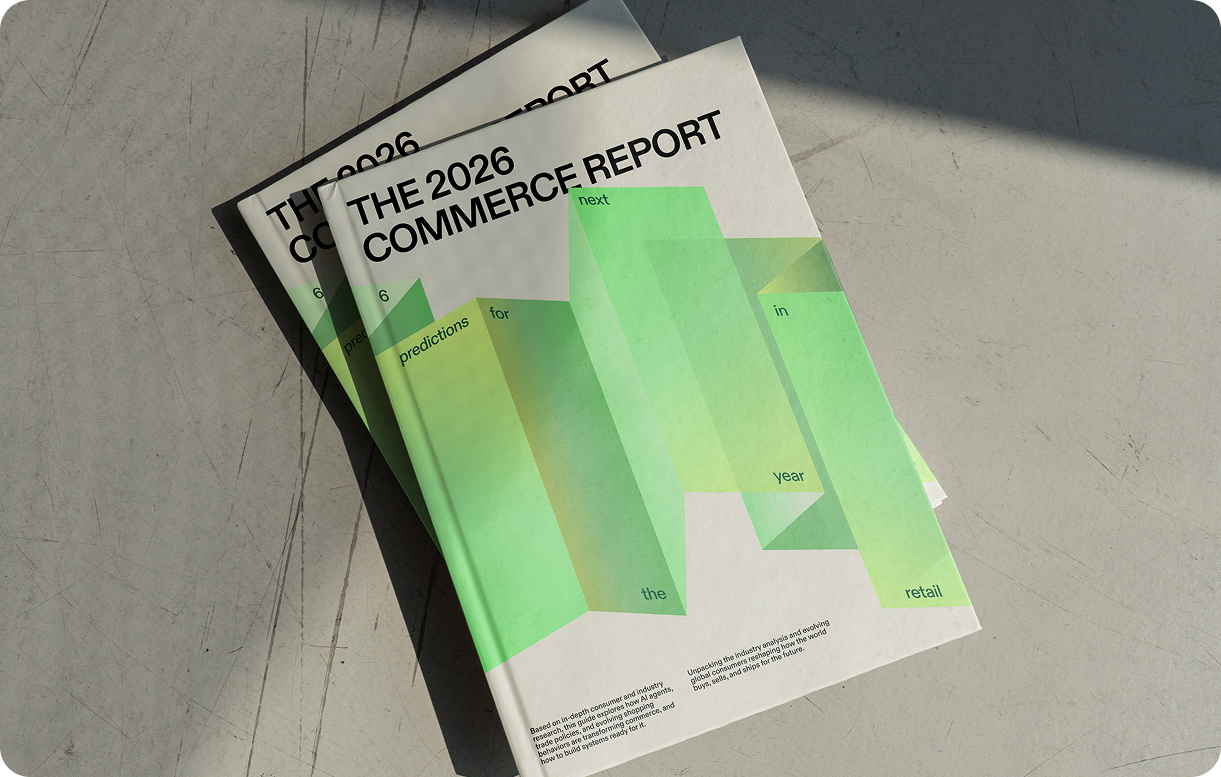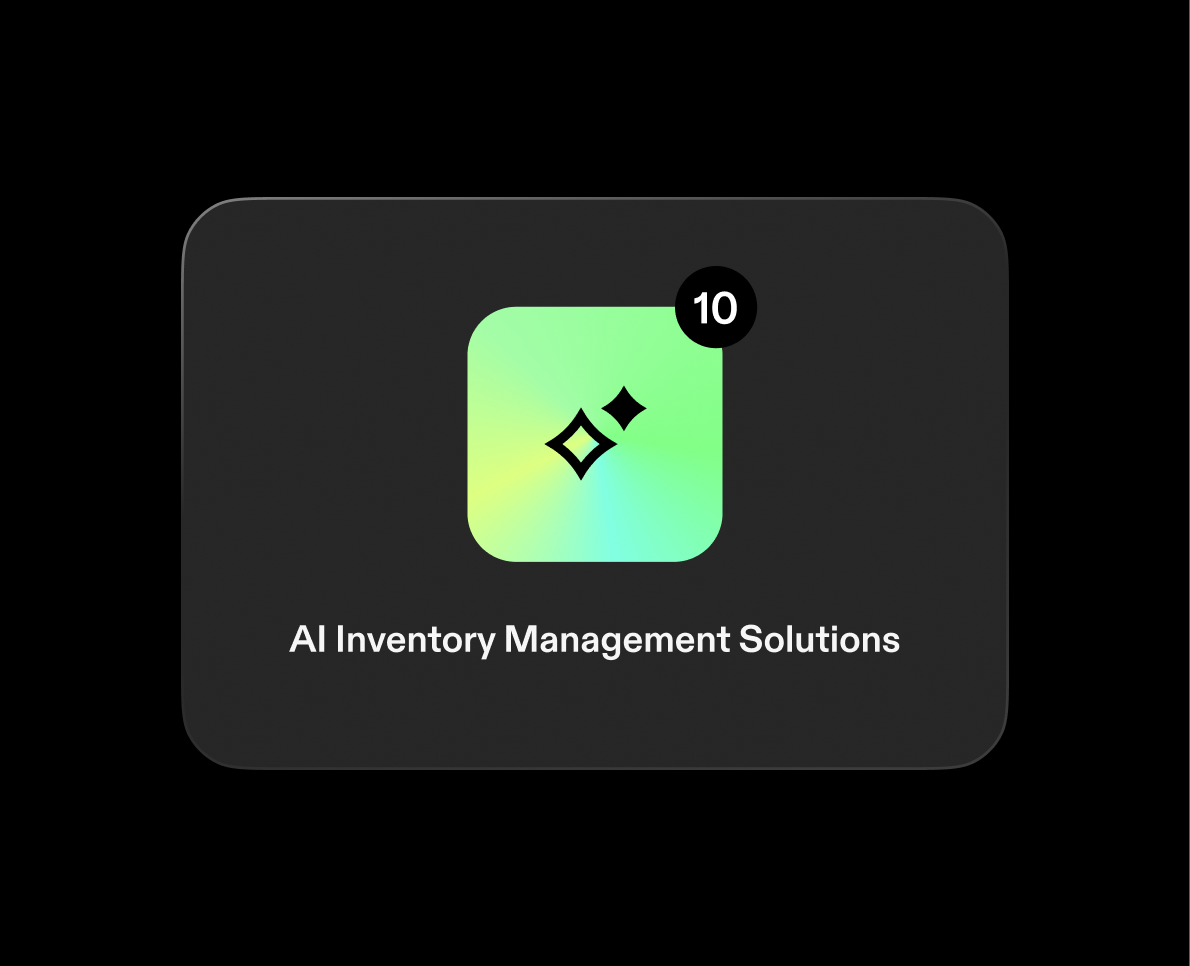Effective inventory management is critical for the success of any ecommerce business. From stockouts to overstocking, managing inventory inefficiently can lead to missed sales or unnecessary costs.
Thankfully, AI-powered inventory management tools are helping businesses optimize their stock control, improve forecasting accuracy, and automate tedious tasks.
In this blog, we will explore how AI in inventory management works, how it can improve your business operations, and why ecommerce businesses should leverage AI for inventory optimization to stay competitive in today’s fast-paced market.
Plus, we’ll introduce Swap’s AI-powered inventory management platform, which makes integrating AI solutions seamless for businesses of all sizes.
What is AI in Inventory Management?
AI in inventory management refers to the use of artificial intelligence technologies to track, manage, and optimize stock levels in real-time. Unlike traditional methods that rely on static reorder points and manual checks, AI inventory management software continuously learns from past sales, market trends, and supplier behavior to make real-time adjustments and offer actionable insights.
AI-powered platforms flag inventory issues early, recommend when to restock, and help operations teams act before shortages disrupt the flow of work. The goal is simple: manage inventory without the usual guesswork, ensuring that the right products are available when needed.
How AI is Used in Inventory Management
AI for inventory management offers several key benefits that automate tasks, improve accuracy, and drive smarter decisions.
Here's a closer look at how AI is transforming inventory control:
AI Inventory Forecasting
One of the core applications of AI in inventory management is predictive inventory forecasting.
AI uses machine learning models to analyze past sales data, customer trends, and external factors like market conditions and seasonality to predict future demand. This enables businesses to prepare better for demand spikes or drops, reducing the risks of stockouts or overstocking.
By leveraging AI inventory forecasting, businesses can plan more effectively, ensuring they maintain optimal stock levels while minimizing waste.
Automated Replenishment
AI inventory optimization takes the guesswork out of replenishing stock. AI can automate the ordering process based on real-time data, adjusting orders based on changes in demand and sales patterns. This reduces human error, speeds up the process, and ensures inventory levels are always aligned with actual demand.
Automating stock replenishment helps businesses keep shelves stocked without manual intervention, improving operational efficiency and reducing the time spent on inventory tasks.
Inventory Segmentation
AI allows businesses to classify inventory based on different attributes like sales velocity, demand patterns, and shelf life. For example, ABC inventory classification (a popular AI-driven method) segments stock into A, B, and C categories, where A items are high-value and low-turnover, B items are mid-range, and C items are low-value, fast-moving products.
This segmentation enables targeted inventory turnover strategies. AI helps businesses determine which products require close monitoring and which can be managed with fewer resources, ensuring a balanced and optimized inventory.
Benefits of AI for Inventory Management
By incorporating AI into inventory management, businesses can streamline operations, reduce costs, and improve customer satisfaction. Let’s dive into the key benefits of AI inventory management:
Higher Inventory Accuracy
Manual inventory management often leads to discrepancies and errors, causing missed sales or overstocking.
AI inventory management systems can flag discrepancies early, automatically syncing data across systems to ensure accuracy. This leads to better stock visibility and prevents costly mistakes.
Real-Time Inventory Updates for Improved Customer Experience
One of the most significant problems with traditional inventory systems is delayed data updates.
This gap between actual stock levels and system records often leads to problems like stockouts.
AI ensures that inventory data is updated in real time, improving the accuracy of product availability for both internal teams and customers.
This is crucial for maintaining trust with customers and reducing the likelihood of canceling orders due to stock issues.
Reduced Costs through Smart Inventory Holding
AI helps businesses find the optimal balance between holding too much inventory (which ties up cash and increases storage costs) and having too little (which risks missed sales).
By analyzing sales data and demand patterns, AI can adjust stock levels based on real-time information, helping businesses reduce holding costs and avoid the costs associated with rushed reordering or excess inventory.
Enhanced Scalability
As businesses grow, managing inventory across multiple locations and channels becomes increasingly complex.
AI enables scalable inventory management, adapting to business growth without increasing manual workload.
Whether expanding into new markets or handling a broader product range, AI systems scale efficiently while maintaining inventory accuracy and operational stability.
Efficient Resource Allocation
AI helps businesses allocate resources more effectively.
By automating repetitive tasks like order placement and stock updates, AI allows human resources to focus on more strategic activities such as supplier negotiations, marketing, or customer service.
This increased efficiency frees up valuable time and improves overall productivity.
Challenges of Using AI for Inventory Management
While AI in inventory management offers numerous benefits, such as improved forecasting, automation, and cost reduction, there are some challenges businesses may face when implementing AI-driven solutions.
It’s important to understand these hurdles and how to address them for a smooth transition to AI-powered inventory management.
Data Quality and Availability
AI systems rely heavily on large volumes of accurate and high-quality data to make effective predictions and decisions. Incomplete, inaccurate, or outdated data can lead to flawed predictions and suboptimal decision-making.
Businesses must ensure their data is clean, consistent, and up-to-date before implementing AI, which might require significant data cleansing efforts.
Businesses should prioritize data integration across all platforms and invest in data quality management tools to ensure AI algorithms work with reliable, accurate data.
Complexity in Integration
Many businesses already have established inventory management systems in place.
Integrating AI-powered tools with legacy systems can be complex, requiring customization and additional resources.
This integration process can take time and may temporarily disrupt operations.
Choose AI inventory management software that offers easy integration with existing systems through APIs or middleware.
Swap’s platform simplifies the tech stack with an all-in-one ecommerce solution.
Security and Privacy Concerns
AI solutions require access to large amounts of sensitive business data, which can raise security and privacy concerns.
Businesses must ensure that their AI systems comply with industry regulations and have robust security measures in place to protect against cyber threats.
Work with AI vendors who prioritize data security and offer compliance with data protection regulations.
How to Use AI for Inventory Management
Implementing AI in inventory management can be easier than it seems, especially with the right software. Here’s how you can leverage AI for better inventory control:
- Choose the Right AI Software: Select an AI inventory management software that aligns with your business size, goals, and industry. Look for tools that integrate with existing systems and provide real-time analytics.
- Start with Forecasting and Automation: Implement AI to automate replenishment and improve inventory forecasting. Start small by using AI for these key areas before expanding to more advanced functionalities like segmentation or anomaly detection.
- Monitor and Adjust: As with any system, it’s essential to regularly review the AI’s performance. Continually evaluate the data, ensure that stock levels are accurate, and make adjustments as needed based on changing market conditions.
Optimise Your Inventory Management with Swap Commerce
AI is revolutionizing the way businesses manage inventory.
By incorporating AI into inventory management systems, businesses can improve forecasting accuracy, reduce costs, and automate routine tasks, ultimately driving higher profits and better customer experiences.
Swap Commerce’s AI-powered platform makes it easy to leverage the full potential of AI in inventory management, helping businesses stay agile and competitive in today’s fast-moving market.
Swap Commerce’s AI-powered inventory management platform offers a seamless way to incorporate AI into inventory processes.
Whether you’re automating stock replenishment, improving demand forecasting, or optimizing your supply chain, Swap’s platform provides the tools to enhance efficiency and improve profitability.
Swap’s platform integrates real-time AI capabilities, providing your team with actionable insights and ensuring that your inventory is always optimized to meet demand.
Ready to optimize your inventory with AI? Book a demo today and discover how Swap’s all-in-one ecommerce platform can transform your operations.

















